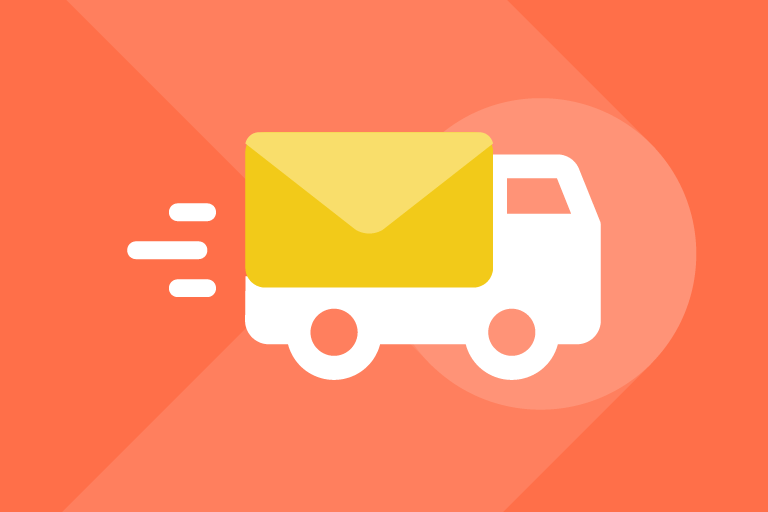What Impacts Email Deliverability?
At this point, you’re likely already aware of how much work goes into maintaining a successful email marketing strategy. You need to be concerned about email delivery rates and ensure your messages don’t end up in a subscriber’s spam folder or get marked as spam by the recipient after it lands in the inbox. Spam placement can happen in several ways:
- You don’t have explicit permission from email subscribers to send them email, resulting in low/no engagement and/or spam complaints
- You sent to inactive or nonexistent email addresses repeatedly.
- You have low email open rates. The average open rate for business emails is 21.5%. If yours is well below that, it can lower your deliverability rate.
While ending up in the spam folder isn’t the desired outcome, there is still a chance that emails in spam folders might be read. What’s worse is if your email is rejected before it even arrives. Emails can bounce back for several reasons.
- Soft bounces are considered temporary since action can usually be taken to avoid additional future bounces. These can be caused by a recipient’s inbox being too full, an out-of-office message, or a message that’s too large.
- Block bounces are a type of soft bounce, but will have more of an impact on your sending reputation. You, the sender, are being blocked by the mailbox provider because previous negative signals were not heeded.
- Hard bounces happen when you send to an invalid email—whether it’s spelled wrong or doesn’t exist—and are considered permanent.
Also included in your email lists might be spam trap addresses. These addresses are managed (and sometimes created) by mailbox providers and filtering companies to identify and monitor organizations sending spam. But not all spam traps are created equal. Some can have highly disruptive effects on your sending, leading to your IP address or your domain being blocklisted.
How to Improve Your Deliverability Rate
There are many ways to fix and, even better, improve your email deliverability rate. You can:
Clean Up Your Email List
Regularly reviewing and removing inactive subscribers will help keep your email list in good shape. A good rule of thumb is to cull addresses that haven’t engaged with your emails in the last six months. Use a cleaning service such as BriteVerify to verify your email lists before sending any emails. Also, be sure to remove any emails that have previously hard bounced.
Tip: You can still include addresses outside the 6-month engagement window in re-engagement campaigns, but add them back in small segments to see at what point engagement drops. At that point, you will want to stop.
Make Your Opt-In Memorable
If people don’t remember signing up for your emails, there’s a good chance they won’t trust you and will either unsubscribe or mark your email as spam. Therefore, using a double opt-in is a good idea. This means recipients must confirm their subscription in their inbox before they are added to your list.
Tip: Requiring a double opt-in helps you build a more engaged subscriber base and protects your sender reputation.
Make it Easy to Unsubscribe
It might seem like you’d want to make it harder for people to stop getting your emails, but it’s better for people to unsubscribe than mark your email as spam.
Tip: Ensure the unsubscribe link is easy to find and use clear language. Also, keep the unsubscribe process simple. Don’t require the user to jump through hoops to unsubscribe (such as logging in to their account first.
Check Your Data
Track metrics such as open, bounce, and complaint rates for signs that your emails aren’t being delivered to your subscribers or aren’t resonating with your subscribers.
Tip: You know what metrics are typical for your program, so look more closely when something looks unusual. Examples include a significant drop in open or click rates or a large increase in bounces. These can indicate spam placement or blocks.
The Case for Email Deliverability
Email is the backbone of a successful cross-channel marketing strategy. Emails drive sales, help you build a relationship with your consumers, offer a forum for feedback, and generate traffic to your website and social media accounts. That’s why it’s so important to ensure that your emails are safely making it to your subscribers’ inbox and that you’re providing content they find valuable and relevant.
If you’re currently an Iterable customer and are interested in our Deliverability Services, be sure to reach out to your CSM. If you’re not an Iterable customer yet, schedule a custom demo today.
| Want to take your deliverability to the next level? Download Email Deliverability 101: How to Reach the Inbox Every Time—your complete guide to building trust, boosting engagement, and ensuring your messages land where they belong. |
































